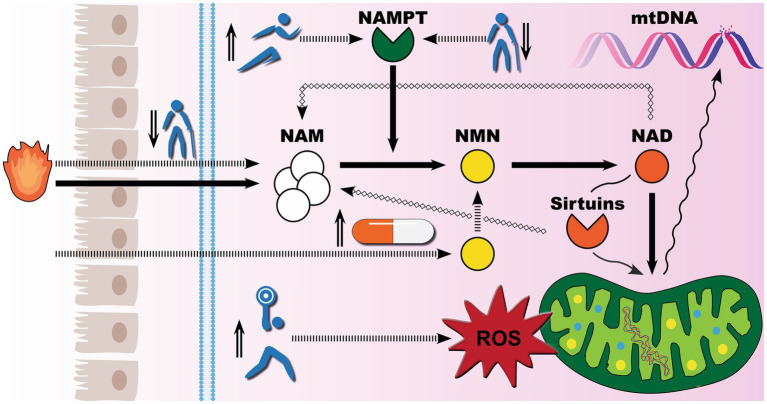Figure 5.
Exercise meets supplements for healthy aging: competing demand for NAD biosynthesis. Mounting evidence suggests that mitochondrial dysfunction is the underlying cause of the rise in noncommunicable diseases. To defend against environmental insults, healthy levels of nicotinamide adenine dinucleotide (NAD) must be maintained. There are three biosynthetic pathways for NAD production in human cells, with the salvage pathway playing the predominant role. Socioeconomic status, aging-associated changes in cellular metabolism, and chronic low-grade inflammation can all result in niacin deficiency and sub-clinical nicotinamide (NAM) levels, thereby compromising the robustness of the salvage pathway for NAD metabolism. Meanwhile, the salvage pathway exclusively depends on the intracellular nicotinamide phosphoribosyltransferase (iNAMPT) to catalyze the conversion of NAM to nicotinamide mononucleotide (NMN). iNAMPT inconveniently declines with age, further impeding NAD production. When NAD recycling cannot meet its demand, such as NAD-dependent sirtuin 3 activation for mitochondrial DNA (mtDNA) repair, aberrant cellular environments may eventually result in mtDNA breakage and mutations. There are two primary strategies to boost NAD biosynthesis. The natural way to induce iNAMPT expression is through exercise training, while the modern way is to provide NAD precursors such as biosynthetic NMN. Of note, exercise training also induces a dose-dependent spike in the production of reactive oxygen species. As global GDP reaches a certain level, people become more health conscious, staging biosynthetic NMN and exercise in the spotlight for life extension.

